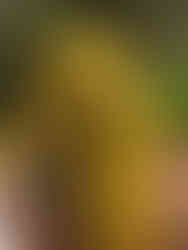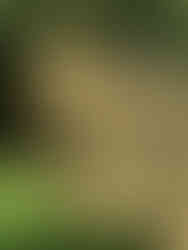KATHERINE PRESTON - WAYZGOOSE
- SSAW Collective
- Nov 4, 2022
- 5 min read
We first met Katherine when she helped us source some fabric to use as tablecloths for one of our earliest events. We were so inspired by her holistic approach to the creation of her textiles, her studio proudly works with entirely natural processes and materials, promoting regenerative and sustainable practices; specialising in natural dyes, natural fibres and traditional printing processes. Our meeting was fundamental in developing our own practice of thinking about the provenance of all aspects of event production from the canapes to the napkins. We are so pleased to share some more of the story behind Wayzgoose.

HOW LONG HAS IT BEEN GOING FOR? WHO STARTED IT AND WHY?
I founded the studio on my return from Myanmar in 2020, with the aim of celebrating heritage textile techniques. During my time there, I ran a textile conservation programme for British NGO, Turquoise Mountain. The focus was to preserve and promote Myanmar’s rich textile heritage while working with weavers across multiple regions, using both backstrap and frame-loom weaving. On Inle Lake in Shan State, cloth is created from lotus plants. The fibre is drawn from the stem of the lotus plant and spun by hand into yarn. Often the yarn is used in its natural state creating cloth from undyed and untreated fibre. The yarn is woven into cloth on a traditional treadle frame loom. The result; a beautiful textile created entirely from natural materials, made in one location.
I also travelled to some of the most remote areas of the country, meeting many incredibly inspiring people. Many of whom were woman weaving from home on a backstrap loom. When creating a textile on a backstrap loom, it can take up to six weeks to weave one metre – a life lesson that things can be created slowly, with passion and made to last.
Returning from Myanmar in 2019 and marrying a farmer, I was interested to explore the possibilities of sustainably focused textiles on our farm in north Buckinghamshire. Can beautiful yet commercially viable natural textiles be created here in the UK?
A wayzgoose was at one time an entertainment given by a master printer to his workmen each year on or about St Bartholomew's Day. It marked the traditional end of summer and the start of the season of working by candlelight. My husband discovered the word on his ‘word of the day’ – it was meant to be!
Over the last two years I have been trialling a handful of pilot projects on the farm. Last year we grew a pilot crop of flax, which has been processed into linen yarn by Rosie Bristow. We have a flock of Teeswater sheep whose fleece is about to be processed at The Natural Fibre Company. With seeds from Nature’s Rainbow, we have grown a selection of plant dyes. Next spring, we are planting a selection of British plant dyes at field scale and we now have a hemp license to grow hemp and explore the possibilities of its fibre.

WHO OR WHAT DO YOU TAKE INSPIRATION FROM, DID YOU LEARN FROM ANYBODY AT ALL?
My Mum is a hilarious combination of someone who grew up with parents who lived through the war and someone who has recently discovered Amazon Prime. She is a hoarder come shopping addict! She has a ribbon draw with pieces of torn fabric from her childhood as well as a collection of broken plastic clothes pegs ordered from Amazon, which broke on their first use and which she refuses to part with. We were brought up to be so conscious where things came from and taught to look after things and make them last. I have always tried to wear vintage clothing (including my wedding dress) and buy things second-hand wherever possible. This upbring has had a strong influence on the principles of my work and studio – where we can, we must reuse, repurpose or regenerate materials.
HOW DID YOU BECOME INTERESTED IN NATURAL DYING?
I was lucky enough to study textiles at Leeds College of Art and Design. One day whilst snooping around in the library (something we used to do before Instagram!), I discovered Eco Colour by India Flint. This book started me on my journey into botanical dyes.
I will never get bored of foraging for seasonal botanicals, boiling them up in my dye pot and waiting to see what colours I can produce. Each season brings a new colour palette. We currently have an abundance of onion skins, harnessing some beautiful neutrals.

DID YOUR TEXTILES STUDIES PROVIDE YOU WITH ANY INSIGHT INTO THE IMPORTANCE OF 'SUSTAINABLE' PRODUCTION PROCESSES?
I studied textiles at both college and at university. When I was a student, we learned about the characteristics of both fibres and dyestuffs, and although we understood the differences in their composition and behaviour, we had very little teaching and understanding on their origins and global supply. Today, luckily things are changing, Central Martins now offer an MA in Regenerative Design.
Once you start to think about where things come from, it becomes very addictive! We have been working on a project with a circular economy specialist, the numbers they have highlighted in their research around the impact of synthetic dyes are quite incredible. We are currently looking at botanical waste for commercial use. At home we turn our food bin into botanical colour!
CAN YOU TELL US ABOUT YOUR SUPPLY CHAINS? HOW DID YOU FORM THOSE RELATIONSHIPS?
I have been working in textiles for 15 years so it’s mostly the accumulation of experience and relationships that I have made along the way. I was lucky to start my career at British textile company, Fermoie, where I helped to set up the studio – this included a lot of time looking for suppliers both throughout the UK and abroad.
WHAT MORE DO YOU THINK NEEDS TO BE DONE TO ENSURE TRANSPARENCY IN SUPPLY CHAINS AND PRACTICES SO CUSTOMERS CAN BE SURE OF ETHICAL AND ENVIRONMENTAL CREDENTIALS?
A huge amount – you could write a dissertation on this! Certainly by increasing industry certifications. In Myanmar we established a set of working standards with NGO Label Step. HOW HAVE YOUR SUSTAINABLE PRINCIPLES IMPACTED YOUR WAYS OF WORKING?
By adhering to a set of working principles, I actually find it easier to design as some limitations help to make the work more focused. Often sustainable principles define your work.

WHAT DO YOU THINK IS THE MOST IMPORTANT THING EVERYONE SHOULD KNOW ABOUT WHAT YOU’RE DOING?
We are trying to connect textiles to our natural world. Where you can, use natural, local fibres, avoid toxic dyes and buy less!
When we think about the textiles we have in our home today, let’s ask ourselves a few questions about their origins. What fibres are they made from? Where are the fibres from? What journey have they been on before arriving in our home? What impurities do they carry? And what were the social and environmental costs to create them?
As designers today, it’s important to share information about the provenance of our materials and the environmental effects of manufacturing. We must aim to adopt regenerative and sustainable practises rather than using ones that detract from the natural world. While there is an increasing focus on the sector, much is still unknown or has been forgotten. If we are open and collaborate, we can support each other in positive change.












Comments